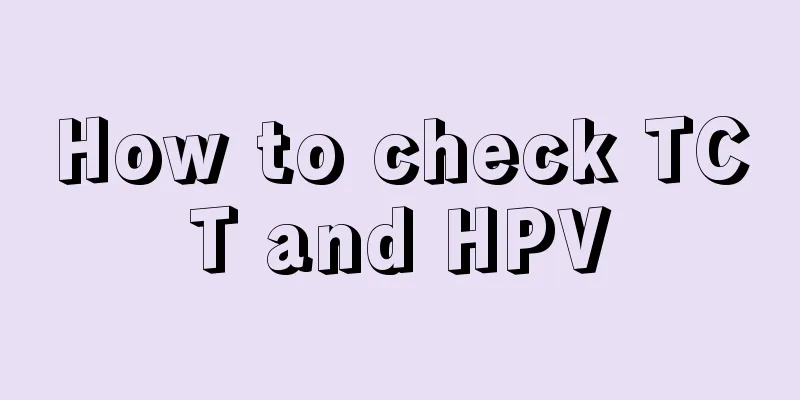What is polycystic follicle syndrome?

|
Women of childbearing age often suffer from polycystic ovary syndrome, which is a very harmful gynecological disease. Women who often suffer from endocrine disorders are prone to this ovarian disease. Once the disease occurs, it is bound to cause a great impact, so preventive measures should be taken in daily life. To this end, let's learn more about the relevant knowledge of this disease. What is polycystic follicle syndrome? Polycystic ovary syndrome (PCOS) is a common disease caused by complex endocrine and metabolic abnormalities in women of childbearing age. It is characterized by chronic anovulation (ovulation dysfunction or loss) and hyperandrogenism (excess production of male hormones in women). The main clinical manifestations are irregular menstrual cycles, infertility, hirsutism and/or acne. It is the most common female endocrine disease. In 1935, Stein and Leventhal summarized the four major symptoms of amenorrhea, hirsutism, obesity and infertility, which were called Stein-Leventhal syndrome (SL syndrome). PCOS patients have enlarged ovaries, thickened tunica albuginea, multiple follicles at different stages of development, and luteinized granulosa cells. PCOS is an important risk factor for type 2 diabetes, cardiovascular disease, gestational diabetes, pregnancy-induced hypertension, and endometrial cancer. The clinical phenotype of PCOS is diverse, and the cause is currently unclear. PCOS often shows familial clustering, suggesting the role of genetic factors. Patients often have mothers with irregular menstruation or fathers with premature baldness; premature baldness is the male phenotype of PCOS, and female PCOS and male premature baldness may be determined by the same allele; hyperandrogenism and/or hyperinsulinemia may be genetic characteristics that family members of PCOS patients also suffer from; family analysis studies conducted under different diagnostic criteria often suggest that the inheritance mode of PCOS is autosomal dominant; however, studies using the "single gene-variant expression model" have shown that PCOS is caused by major gene mutations and 50% can be inherited by offspring. Classification PCOS diagnosed according to the international diagnostic criteria for PCOS (see the diagnosis section for details) can be subtyped to facilitate individualized treatment selection: Type 1: Classic PCOS, with polycystic ovarian changes on ultrasound and clinical manifestations of hyperandrogenism and/or hyperandrogenism; Type 2: Ultrasound shows polycystic ovaries and rare or no ovulation; Type 3: NIH standard PCOS, clinical manifestations of hyperandrogenism and/or hyperandrogenemia and infrequent ovulation or anovulation; Type 4: Ultrasound polycystic ovarian changes, clinical manifestations of hyperandrogenism and/or hyperandrogenemia and infrequent ovulation or anovulation are also present. This type is also called classic PCOS. |
<<: What should I do if my ovarian cyst becomes enlarged?
>>: How do ovarian cysts form?
Recommend
How to unclog the milk hole with a needle
Breast milk is the best way to feed babies. Exclu...
Can the pelvic floor muscles recover on their own?
Most women will suffer pelvic floor muscle damage...
What is the cause of menstrual heat?
Every woman's physical health is different, b...
How to judge whether the abortion is complete?
Medical abortion is a way of having an abortion. ...
Staple food, are you eating it right?
Food is the most important thing for people, and ...
Pharmacist's Antidote | As the weather turns cooler, respiratory diseases are more prevalent. How can children be nebulized efficiently and conveniently at home?
Home nebulization for children is effective and e...
Miscarriage, no menstruation for three months
Whether it is an artificial abortion or a spontan...
The efficacy and function of tinidazole
Women's vaginas are susceptible to infection ...
Why does my butt hurt after pregnancy?
After pregnancy, the hormones in the pregnant wom...
What causes abdominal bloating and pain?
Every female friend should be more concerned abou...
A few words: Why surrogacy cannot be abandoned in other countries, and about abortion
Niu Niu: I don’t understand why abortion is illeg...
Does drinking cola affect pregnancy?
Coke is a carbonated beverage, and its position i...
Why is the ring finger often more suitable for finger blood collection?
In medical practice, finger blood collection is a...
Do you need tin foil when grilling? How can you avoid burning the grill?
Barbecue has entered an era of multiple values. I...









